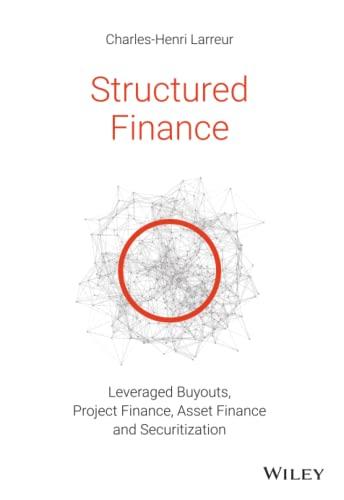Question
Can you please answer Case 6-33 in the Management Accounting: Information for Decision-Making and Strategy Execution 6th Edition by Anthony A. Atkinson (Author), Robert S.
Can you please answer Case 6-33 in the Management Accounting: Information for Decision-Making and Strategy Execution 6th Edition
by Anthony A. Atkinson (Author), Robert S. Kaplan (Author), Ella Mae Matsumura (Author), S. Mark Young (Author)
6-33
Time Driven activity based costing, activity based management
Midwest Office Products 7 John Malone, general manager of Midwest Office Products (MOP), was concerned about the financial results for calendar year 2003. Despite a sales increase from the prior year, the company had just suffered the first loss in its history (See summary income statement in Exhibit).
Exhibit Midwest Office Products: Income Statement, January-December 2003
| Sales | $42,700,000 | 122.0% |
| Cost of Items purchased | 35,000,000 | 100.0% |
| Gross Margin | 7,700,000 | 22.0% |
| Personnel expense (warehouse, truck drivers) | 2,570,000 | 7.3% |
| Warehouse expenses (excluding personnel) | 2,000,000 | 5.7% |
| Freight | 450,000 | 1.3% |
| Delivery truck expenses | 200,000 | 0.6% |
| Order entry expenses | 840,000 | 2.4% |
| General and selling expenses | 1,600,000 | 4.6% |
| Interest expense | 120,000 | 0.3% |
| Net income before taxes | ($80,000) | -0.2% |
Midwest Office Products was a regional distributor of office supplies to institutions and commercial businesses. It offered a comprehensive product line ranging from simple writing implements (such as pens, pencils, and markers) and fasteners to specialty paper for modern high-speed copiers and printers. MOP had an excellent reputation for customer service and responsiveness.
Warehouse personnel at MOPs distribution center unloaded truckload shipments of products from manufacturers and moved the cartons into designated storage locations until customers requested the items. Each day, after customer orders had been received, MOP personnel drove forklift trucks around the warehouse to accumulate the cartons of items and prepare them for shipment.
MOP ordered supplies from many different manufacturers. It priced products to its end-use customers by first marking up the purchased product cost by 16% to cover the cost of warehousing, order processing, and freight; then it added another 6% markup to cover the general selling, and administrative expenses, plus an allowance for profit. The markups were determined at the start of each year, based on actual expenses in prior years and general industry and competitive tends. Midwest adjusted the actual price quoted to a customer based on long-term relationships and completive situations, but pricing was generally independent of the specific level of service required by that customer, except for desktop deliveries.
Typically, MOP shipped products to its customers using commercial truckers. Recently, MOP had introduced a desktop delivery option in which Midwest personnel personally delivered supplies directly to individual locations at the customers site. Midwest had leased four trucks and hired four drivers for the desktop delivery service. Midwest charged a price premium (up to an additional 5% markup) for the convenience and savings such direct delivery orders provided to customers. The company believed that the desktop delivery option would improve margins and create more loyal customers in its highly competitive office supplies distribution business.
Midwest had introduced electronic data interchange (EDI) in 1999, and a new internet site in 2000, which allowed customer orders to arrive automatically so that clerks would not have to enter data manually. Several customers had switched to this electronic service because of the convenience to them. Yet Midwests costs continued to rise. Malone was concerned that even after introducing innovations such as desktop delivery and electronic order entry, the company could not earn a profit. He wondered about what actions he should take to regain profitability.
| 4 | |||||
Required
(a) Based on the interviews and the data in the case, estimate the following:
(1) The cost of processing cartons through the facility
(2) The cost of entering electronic and manual customer orders
(3) The cost of shipping cartons on commercial carriers
(4) The cost per hour for desktop deliveries
(b) Using this capacity cost rate information, calculate the cost and profitability of the
five orders. in Exhibit 6-10. What explains the variation in profitability across the five orders?
(c) On the basis of your analysis, what actions should John Malone take to improve Midwests profitability? Include suggestions for managing customer profitability.
(d) Suppose that currently, Midwest processes 40,000 manual orders per year, with a total of 200,000 line items entered, and 30,000 electronic orders.
(1) How much unused practical capacity does the company have?
(2) If the companys efforts to encourage customers who order manually to change to electronic ordering results in 20,000 manual orders per year (100,000 line items entered) and 50,000 electronic orders, how many order entry operators will the company require? If order entry resource costs can be reduced in proportion to the number of employees, what will be the cost savings for the changes?
(3) Returning to the original information in part D, if the companys process improvement efforts result in a 20% reduction in time to preform each of the three order entry actives, how many order entry operators will the company require? If order entry resource costs can be reduced in proportion to the number of employees, what will be the cost savings for the process improvement?
Step by Step Solution
There are 3 Steps involved in it
Step: 1

Get Instant Access to Expert-Tailored Solutions
See step-by-step solutions with expert insights and AI powered tools for academic success
Step: 2

Step: 3

Ace Your Homework with AI
Get the answers you need in no time with our AI-driven, step-by-step assistance
Get Started


